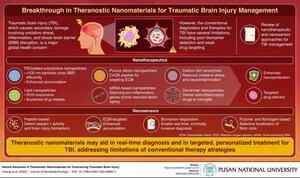
Pusan National University Scientists Develop Robust "Huber Mean" for Geometric Data
A new robust statistical method resists outliers, improving data reliability in AI, robotics, and medical imaging
BUSAN, South Korea, Nov. 13, 2025 /PRNewswire/ -- In many modern sciences, data often exist on curved geometric spaces rather than flat planes, posing challenges for traditional statistical tools. These curved spaces are called Riemannian manifolds. Researchers from Pusan National University and Seoul National University have developed the "Huber mean," a new method for robustly analyzing data on Riemannian manifolds. This study offers a powerful way to calculate averages that remain accurate even when data contain noise or outliers.
In an era driven by complex data, scientists are increasingly encountering information that doesn't lie neatly on flat, Euclidean surfaces. From 3D medical scans to robot orientations and AI transformations, much of today's data lives on curved geometric spaces, called Riemannian manifolds. Analyzing such data accurately has remained a challenge, especially when noise or outliers distort results.
To address this, Professor Jongmin Lee from the Department of Statistics, Pusan National University in collaboration with Professor Sungkyu Jung of Seoul National University developed a new statistical method called the Huber mean, designed to make data analysis on curved spaces more robust and reliable. The study, published in the Journal of the Royal Statistical Society: Series B (Statistical Methodology) on August 25, 2025 introduces a robust generalization of the classical Fréchet mean by integrating the Huber loss function, combining efficiency and resistance to outliers in one elegant framework.
"Our study introduces a robust generalization of the classical Fréchet mean on Riemannian manifolds," said Lee. "This provides greater stability against outliers and improves the reliability of statistical analysis on geometric data."
The Huber mean adapts automatically to the data structure, using L₂ (least-squares) loss for typical observations and L₁ (absolute-deviation) loss for large deviations. This balance enables it to achieve a breakdown point of 0.5, meaning the estimator remains reliable even if half of the data are outliers or extreme values. The study also provides theoretical guarantees for the existence, uniqueness, convergence, and unbiasedness of the estimator, along with a new computational algorithm that converges quickly in practice.
"This method enables more robust data analysis in non-Euclidean settings, which has potential applications in areas such as computer vision, medical imaging, and shape analysis," Lee explained.
These applications extend across scientific and engineering fields. In medical imaging, the Huber mean could improve averaging of brain or organ shape data, leading to more accurate diagnoses. In robotics, it could help systems better interpret motion and orientation data, even in noisy or unpredictable environments. In AI and machine learning, it could make models operating on geometric data (linked rotations, graphs, or transformations) more resilient and fairer.
Lee added, "By providing a foundation for robust and geometrically aware data analysis, this research could quietly underpin the next generation of trustworthy AI, precision medicine, and intelligent technologies that interact with the real world."
Reference
Title of original paper: Huber means on Riemannian manifolds
Journal: Journal of the Royal Statistical Society Series B: Statistical Methodology
DOI: 10.1093/jrsssb/qkaf054
About Pusan National University
https://www.pusan.ac.kr/eng/Main.do
Media Contact:
Goon-Soo Kim
82 51 510 7928
[email protected]
SOURCE Pusan National University








Share this article